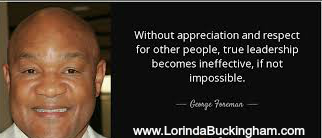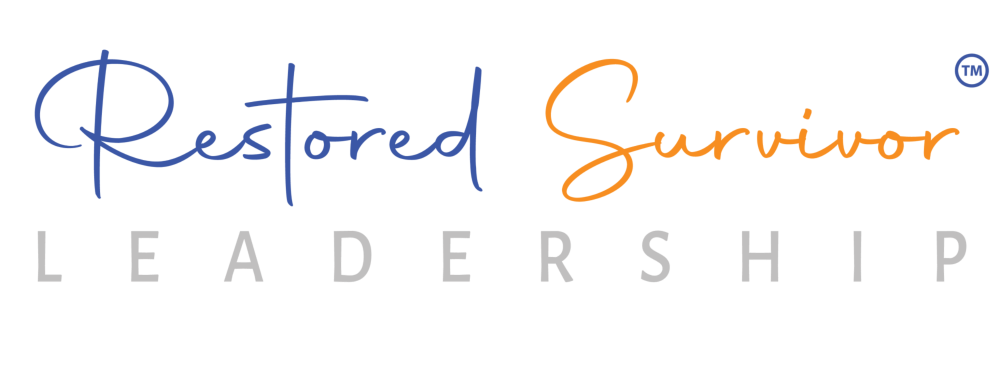Soft Skills with Lorinda: Appreciating The Difficult People

Soft skills? What are soft skills? Many of us hear the word, but what does it really mean. Do you know that many of our youth and adults do not even know what ‘soft skills’ are? Appreciation is one of the many valuable soft skills. Yet, these are the skills that students and employers need to excel in their industries. One definition of soft skills is
“personal attributes that enable someone to interact effectively and harmoniously with other people”
These are the skills more related to things such as how we interact with people, our image, verbal & non-verbal communication, leadership, how well we can work with others to get things done, and much more! Today, I am talking about appreciation. I will talk about more in future blog posts. I want to share a story that I learned about appreciation. Little did I know that I was also learning ‘soft skills’.
I remember when I was a young girl my mother would teach me about appreciation and gratitude. She would always tell me to say “thank you” and “please”. My mother said that I could go a lot further in life by learning to appreciate people. I really did not understand it much as a child, but I decided to put it to the test. There was a penny candy store in my neighborhood called the “Shake Shop”. All of the kids would go there during their walk to and from school to pick up penny candy, juices, and more. One day, I went in to the candy store as usual, placed my purchases on the counter, paid for my order, and as the cashier was bagging my goodies I said “thank you very much!”. The cashier stopped and said “Little girl, you are very welcomed! Here’s a couple of extra cherry balls, have a great day!” We both smiled at each other and I said thank you one last time before leaving the store.
I learned in that moment that saying kind words can go a long way. Surely, it was great that I was able to get a few extra cherry balls because they were my favorite, but more importantly I learned that people respond better when you use kind words and appreciate them. I learned that I could make someone smile.
Learning and applying such appreciation is also a lesson in leadership. Nobody becomes a successful leader unless others want you to be; you need help; and part of your growth as a leader is to recognize and show appreciation for that help.
But you’ll give your leadership and ultimately your career a real boost by extending your appreciation not just to the people you like and who are on your side but also to the people you may dislike: the difficult people in your life, those people who for right or wrong reasons cause you grief. One of the most effective ways of dealing with them is to appreciate them. I mean truly appreciate them. When you do, you may find that you are dealing with them in surprisingly productive ways.
The word “appreciation” comes from a Latin root meaning “to apprehend the value.” In other words, your appreciation of difficult people must be centered on your genuine understanding of the value they offer you and your organization.
You are not just understanding their point of view. You are actually appreciating it; and you are using that appreciation as a tool to get more results, more results than if the difficult people had not entered your life. Otherwise, your appreciation, at least as far as leadership is concerned, is a waste of time.
Here’s a 4 step process to make appreciation a results-generator.
1. Team Up
To get appreciation rolling, know that you must be a team, you and the difficult person. Mind you, you’re not trying to get the difficult person to appreciate you. You have little control over the other’s appreciation. You do, however, have control over yours. So, focus on cultivating yours. That cultivation happens only in a relationship — a team relationship with the other person, not necessarily a personal relationship. In a team-relationship, you don’t have to like the other person. You simply have to work with them — actively and wholeheartedly, irrespective of personal feelings. And the goal of your team is to forge out of the difficulties you’re having with one another and engage the leadership process that achieves results.
2. Identify
When you’re dealing with a difficult person, you’re often entangled in strong emotions. The first thing to do is, with the person’s help in a face-to-face meeting, get at the precise causes of the difficulties. Try to remove yourself from your emotional entanglements. “Break down” what’s happening the way football coaches break down the plays of opposing teams studying game films. Only when both of you are clear as to those moments and agree on what took place can you start to talk with each other about your feelings connected to those moments of physical action. For instance, that person may contend you are not listening to what h/she says to you. Have the person describe the exact moment when you were not listening. Where were you? What was being said? Precisely, what gave that person that impression?
3. Agree
You and the person must agree on what is important in regard to the difficulties you are having. A gap between what you think is important and what the other person thinks must be closed. The test in closing it is results. Does the difficulty you are having with the person go right to the heart of the results you need to achieve? Until you can come to agreement as to whether you were or were not listening and the importance of that, you’ll continue to have difficulties. Which means you won’t be able to go to the next, and most important, step.
4. Transform
Transform the specific into a results process, a process that will get you increases in results. Without such a process, the previous steps will not be as effective. For instance, let’s say you both come to an agreement that you need to be more attentive when the person is speaking. Then, you might develop a “listening process.” Implementing a process with “active listening techniques” may be helpful in bridging the gap of communication. Whatever process you come upon in whatever difficulty you are having with people, that process must achieve specific increases in results — more results than if you had not used the process.
There will always be those among us who will cause us difficulties. No matter how experienced and successful you are as a leader, difficult people will always be lined up outside your door, wanting into your life. Moreover, there are probably a lot of them inside the door too, trying to cut you down to size, thwart your plans, smear your reputation.
Instead of clashing with them or avoiding them, try appreciating them. When you use this process, you may find that they’re not liabilities but assets. This will develop you as a leader and help you grow in your soft skills!







